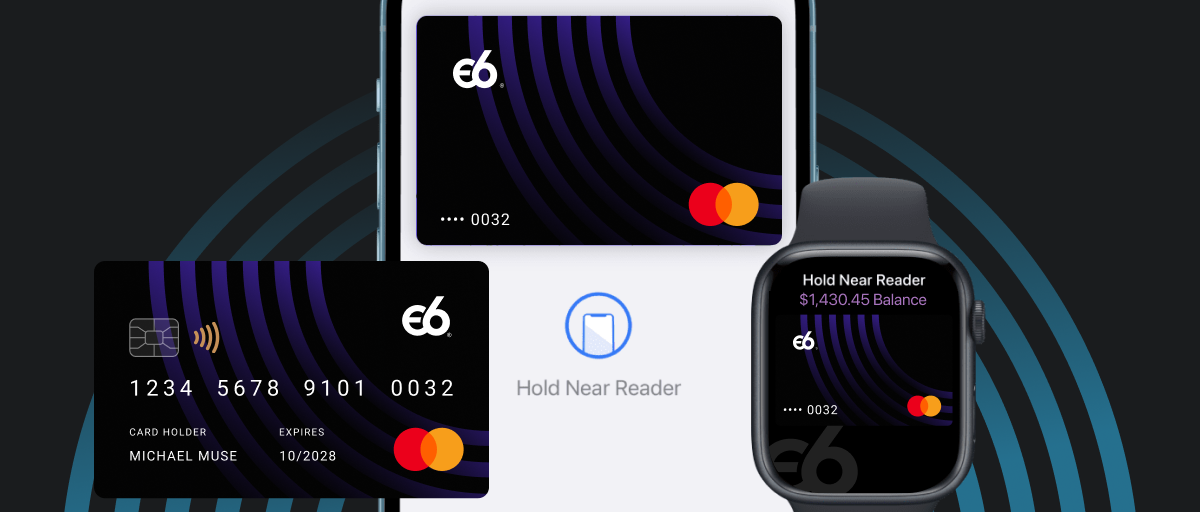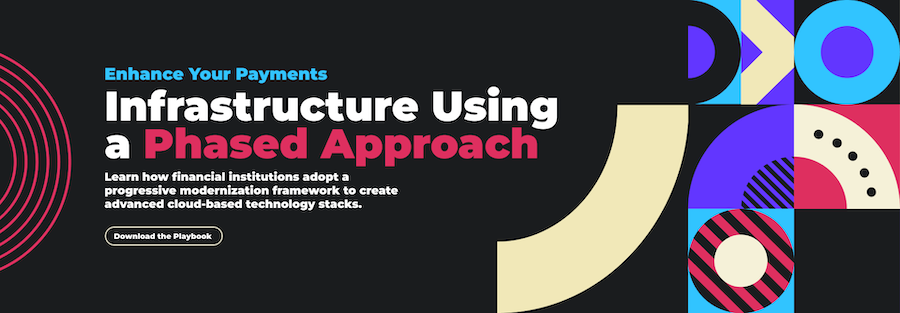How banks can benefit from touchless payment technology

In today's fast-paced, digital-first world, touchless payment technology is rapidly gaining traction. Touchless transactions are not only redefining consumer behavior but also presenting unique opportunities for banks to streamline operations, heighten customer satisfaction, and generate a competitive edge. Learn how banks can leverage a touchless payment solution to enrich their offerings and accelerate growth.
What are contactless payment methods?
Contactless payment, also known as touchless payment, is a secure method for consumers to purchase products or services via credit or debit card, or via smart cards (also known as chip cards). Touchless payments use Radio Frequency Identification (RFID) technology or near-field communication (NFC).
The customer simply taps their card to a point-of-sale terminal. In recent years, this form of payment has expanded to include mobile devices and wearable technologies, further simplifying the payment process for a seamless user experience.
A brief history of contactless payment technology
While the concept of contactless payment technology might seem new, its foundations date back to the 1990s. Motorola first introduced the idea through Speedpass in 1997, a keychain that allowed customers to make payments at Exxon gas stations. Though it was limited in scope, it marked the first widespread use of contactless payments. Then, in 2003, Mastercard introduced PayPass, a contactless payment feature in its credit cards.
But the real game-changer was the development of NFC technology. In 2011, Google incorporated NFC into its mobile operating system, Android, leading to the birth of Google Wallet (now Google Pay). Similarly, Apple introduced Apple Pay in 2014, allowing users to make payments using their iPhones.
These advancements have allowed touchless payment technology to evolve from a novel concept to a household necessity in less than two decades, transforming the landscape of financial transactions.

What banks need to know about contactless cards
As the demand for convenience and speed continues to grow among consumers, providing contactless cards can position a bank as modern and customer-centric, enhancing its overall brand image. Banks should take the necessary steps to integrate contactless payment technology into their current systems and prepare for a future where contactless is the norm.
The convenience of paying contactless
Contactless cards can facilitate faster transactions, reducing waiting times and improving customer satisfaction. For banks, this can lead to increased card usage and higher revenue, all while remaining a secure payment method.
From the customer's viewpoint, contactless payments are extremely convenient. Contactless technology eliminates the need to carry cash, and the quick 'tap-and-go' nature of these transactions saves them time. This makes contactless payments a preferred choice for busy individuals who value efficiency. Plus, there's no need to remember PINs or sign receipts for small purchases.
Contactless payment popularity surge
Contactless payments have seen a huge rise in popularity, particularly amidst the recent global pandemic. People are increasingly seeking safe, hygienic ways of making transactions, and touchless payment technology fits the bill perfectly.
According to a recent study by Mastercard, nearly 80% of all transactions conducted globally are contactless. A report by Juniper Research predicts that by 2027, the total value of contactless transactions will exceed $2 trillion. This popularity is not just a trend but a clear indicator on where the future of financial transactions is heading.
Touchless payment security
Security is a paramount concern for both consumers and banks when it comes to contactless cards. These cards use encryption to protect customer data, making them as secure as traditional chip and PIN transactions.
If customers have concerns about safety, financial institutions could consider investing in customer education (via webinars or blog posts) to alleviate any concerns about safety and promote the use of touchless technology.

Standards that support contactless payments
There are some key standards set in place to support contactless payments and ensure their smooth operability. The International Organization for Standardization (ISO) and the International Electrotechnical Commission (IEC) have established standard ISO/IEC 14443 for contactless smart cards.
Most contactless payment systems like Visa's payWave, Mastercard's PayPass, and American Express's ExpressPay follow ISO/IEC 14443. This standard defines protocols for data transmission, ensuring a secure and efficient mode of communication between the card and the reader.
EMVCo - an organization collectively owned by American Express, Discover, JCB, Mastercard, UnionPay, and Visa - manages and evolves the EMV® Specifications and related testing processes. The EMV® Contactless Specifications describe the interoperability between contactless cards and readers. This ensures global compatibility and enhances the overall security features of the payment system.
How banks can implement touchless payment technology
Given the many advantages of contactless payment technology, banks should consider strategies to adopt it in their systems.
Invest in technology
The primary step for a bank is to invest in contactless payment technology solutions that best suit your institution. Explore opportunities to partner with vendors who offer contactless payment solutions in order to support your customers and stay ahead of the competition.
Educate your staff
Another key step that banks should take is training their staff on how to use touchless payment technology. This includes providing comprehensive information on the different types of cards available and how they work both for customers and on the back end. This knowledge will help staff members support their customers more effectively and build their trust in your bank's services.
Promote the benefits
Banks should actively promote the benefits of contactless payments among their customer base. This can include initiatives such as sending out emails or offering discounts for those who use touchless payment technology.
Modernize your payments solutions with E6
As the demand for convenience and speed continues to grow among consumers, banks have to stay ahead of the curve in order to remain competitive. Leveraging touchless payment technology is a great way to modernize your payments solutions and secure customer loyalty.
At E6, we offer cutting-edge technology that banks can use to easily integrate contactless payment systems into their existing operations. Contact us today about our progressive modernization approach so you can get to market faster without any disruptions to your tech stack.

E6 Team
About the Author
Episode Six provides financial institutions with solutions for legacy payment stacks that aren’t fulfilling the needs of an expanding industry. We are a global provider of enterprise-grade payment technology and ledger management infrastructure for banks that need to keep pace with disruptors and evolving consumer preferences.


